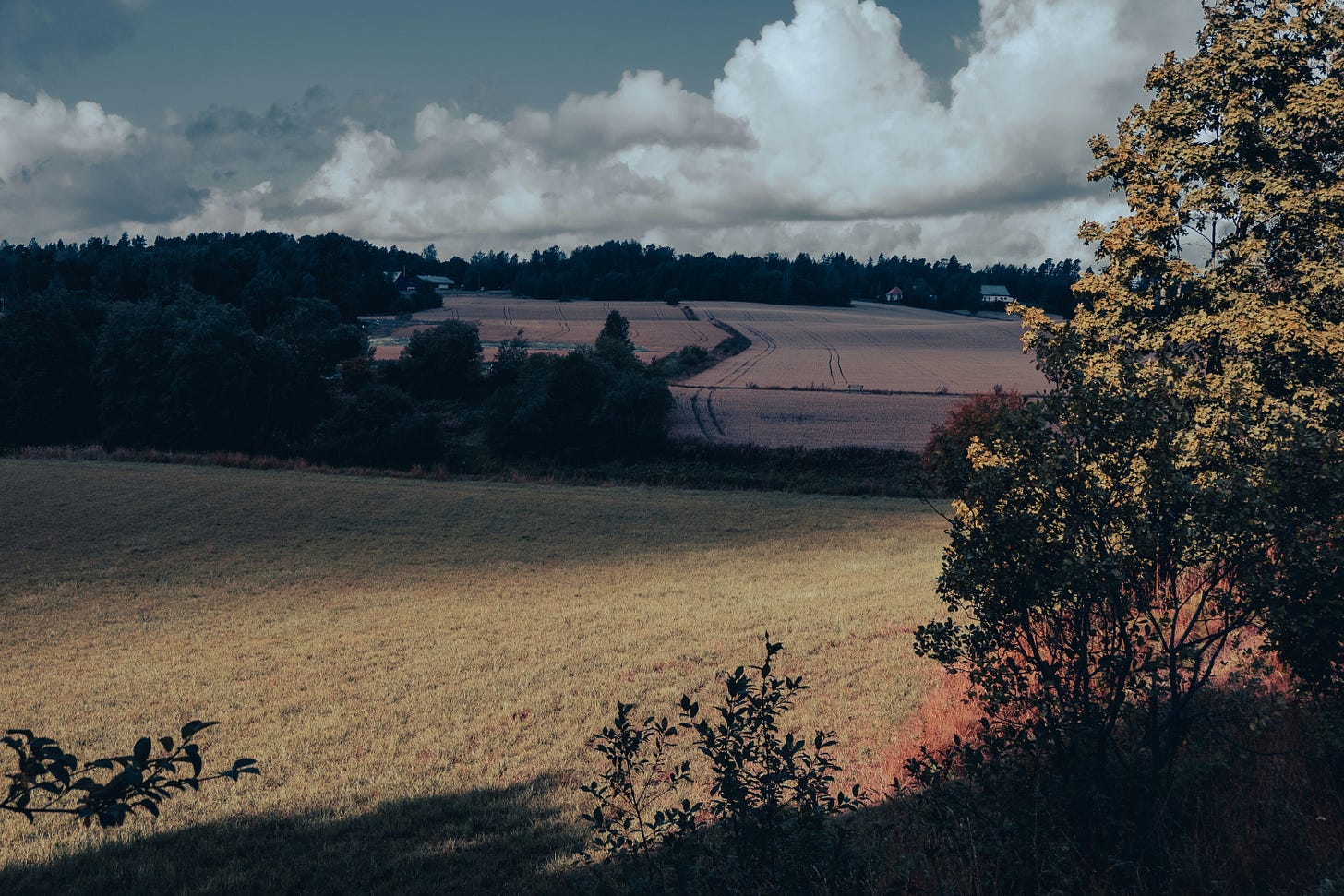close reading: summer horror, the turn of the screw and games the seasons play
horror theory, time rewinding and restarting, and a close look at seasonality and high summer spooky things
Thank you so much to my paid subscribers who make everything I write here possible. That’s doubly true for big translation and commentary projects like Sir Gawain and the Green Knight, which take a lot of work and will all be posted for free. If you’d like to read more of my writing and support my work, you can become a paid subscriber for £4 per month and get an extra essay per week. Coming up soon we have medievalism in Call Me By Your Name. If you would like to support me but aren’t able to become a regular paid subscriber, I also have a ko-fi tip jar here.
In order to understand horror, we must first understand play. I’ve read The Turn of the Screw, Henry James’ 1989 haunted house novella, three or four times. Perhaps it’s my ecocritical medievalism bleeding through as I read it in my late twenties, getting ready for my PhD. But on my last reread, I couldn’t help but think about all the dissembling games people play through this text. Quint plays at being a gentleman, Miss Jessel plays at being a respectable lady, the governess plays through her lessons and makes gamified songs out of learning the alphabet. The thing that most horrifies people in The Turn of the Screw and its many screen adaptations is usually watching children play at being adults and adults play at being children. Games that blur the line between roles, responsibilities and relationships create a ghost story of adults becoming children, children becoming adults, and no one knowing who will protect them when a face appears in the window.
On this reread, though, I couldn’t stop thinking about the weather.
It’s easy to associate ghost stories with winter, and The Turn of the Screw begins at a classic, M.R. James-esque midwinter session of sharing ghost stories around a fire. This frame sets a lusciously creepy tone. I’m absolutely delighted it got preserved in the Haunting of Bly Manor adaptation (which I think might be the best TV adaptation of a literary source text ever, but that’s another essay). Establishing that we are around a fire, in a community, in winter, is the most wonderful possible beginning to a classical ghost story.
But the seasons play games here too. A lot of the most horrifying moments in The Turn of the Screw take place when seasons bled into each other and make us confused about weather, light, and time. The climax of the ghost story is the last scene, where the child Miles and the adult ghost Quint become indistinguishable to the governess narrating. At the same time, though, we see hazy summer light and ghastly winter chill blur and kaleidoscope together. These ghosts make us confused about where we are, how long we’ve been there, how old we are, and how time passes.
Perhaps it’s because April is an odd time to be rereading this book. But there’s a huge amount of warm air in this book. The moments when the ghosts appear blur our understanding of the time of day, time of year, and how we are meant to relate to the world around us. Reading ecocritically, we see Bly and its ghosts bring all the seasons together into the same confusing, kaleidoscopic, haunting moment.
It’s notable, I think, that one of the only references to another book in the whole text is to Ann Radcliffe’s Mysteries of Udolpho (p.30). This is a gothic classic that combines the winter trappings of blustery castles with a surprisingly warm Mediterranean location. Udolpho is a book that makes time strange, meandering through months and years of time with indistinct weather and observations of the sky. The Turn of the Screw might take place in the same horrific neverland — blending as many times, places and weathers as the ghosts need.
So if, like me, you’re keen to bring some ghostliness into the warmer seasons, we can take a walk together through the seasons of The Turn of the Screw and all the games they play with us.
Winter
Winter is the easiest season to find here. We start in winter. The frame narrative, essential to making a nineteenth-century ghost story feel truly shivery, has two wintry references in the first sentence. We hear ‘round the fire’ and ‘on Christmas Eve in an old house’ and know exactly what kind of story we are listening to (p.3).1 For a good old-fashioned ghost story, this is the same kind of genre signifier as a pampered rich girl breaking her heel in the slush as she arrives in a small town to meet a flannel-wearing man, or a runner in the first minute of a crime show heading down an isolated path at dawn. We can already see the love story and the half-buried body. Here, we can already see the ghosts.
The act of telling the story at all is a wintry one. Describing the man who tells the story, the first narrator says:
He had broken a thickness of ice, the formation of many a winter; he had his reasons for a long silence. (p.4)



